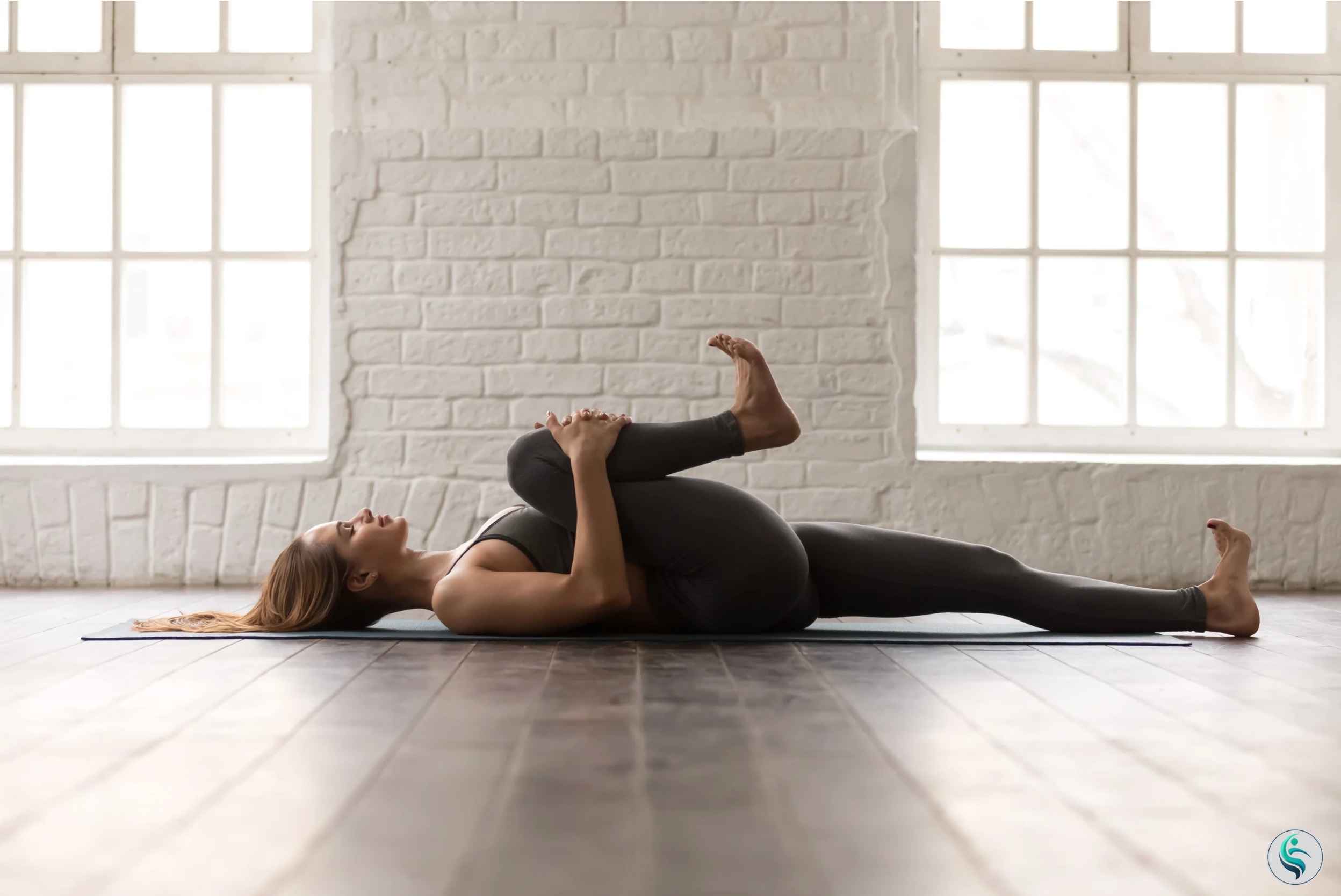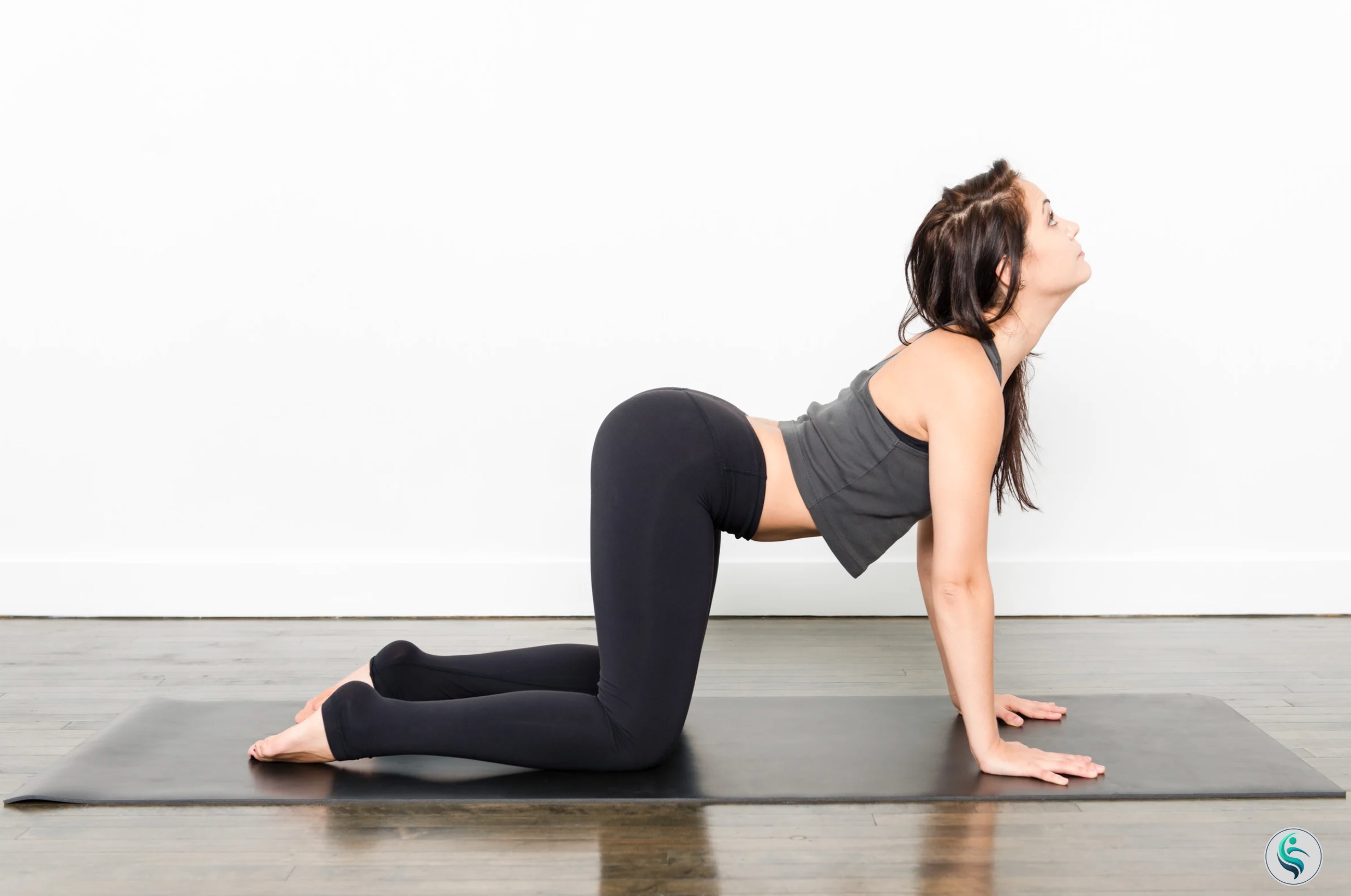Stretching exercises for sciatica may not be the first thing that comes to mind when dealing with nerve pain. Some might feel too old for it, think it’s too complicated, or simply not enjoy stretching. To be honest, I used to be one of those people.
Back in my younger years, I thrived on physical activities—running races, playing ping pong, basketball, and even taking on Spartan races. But now, in my 50s, things feel different. Work became more demanding, keeping me glued to my chair for hours at a time. Though I was never officially diagnosed, I knew something was wrong. A tingling sensation would creep down my leg whenever I moved a certain way. All signs pointed to one thing—sciatica.
Before rushing to the doctor, I decided to explore alternatives. That’s when I came across stretching exercises for sciatica. Some seemed too advanced, while others felt impractical. But after testing different approaches, I found nine simple stretches that made a real difference. If done consistently, they might just help you too.

Understanding Sciatica: What You Need to Know
Before we dive into the stretches, let’s first understand what sciatica is. If you’ve ever experienced sharp, radiating pain from your lower back to your legs, you might already be familiar with it—even if you didn’t know what to call it.
What is Sciatica?
Sciatica isn’t just regular back pain—it’s caused by irritation or compression of the sciatic nerve, the longest nerve in your body. This nerve starts in your lower back, travels through your hips, and runs down both legs. When something (like a herniated disc, tight muscles, or spinal misalignment) presses on it, the result is persistent pain and discomfort.
What Does Sciatica Feel Like?
Sciatic pain can feel different for everyone. Some describe it as a deep, dull ache, while others experience a sharp, shooting pain that runs down one leg. It can also cause tingling, numbness, or even weakness. The pain tends to flare up after prolonged sitting, standing, or sudden movements.
Can Stretching Really Help?
Absolutely! The right stretching exercises for sciatica can do wonders by:
✅ Releasing tight muscles that may be compressing the sciatic nerve.
✅ Improving blood circulation to reduce inflammation and speed up healing.
✅ Increasing flexibility and mobility so movement becomes easier and pain-free.
By adding these simple stretches to your daily routine, you can take control of your sciatica pain and start feeling relief.
Why Stretching Exercises for Sciatica Are Important
Stretching isn’t just about flexibility—it plays a critical role in nerve health and pain relief.
- Releases muscle tension – Tight muscles, especially in the piriformis, hamstrings, and lower back, can compress the sciatic nerve. Stretching them can ease that pressure.
- Enhances blood flow – Good circulation brings oxygen and nutrients to irritated tissues, helping them heal faster.
- Promotes spinal alignment – Many sciatic issues come from poor posture and spinal misalignment. Stretching strengthens supporting muscles, helping to correct these imbalances.
And the best part? This routine only takes 18 minutes a day!
9 Stretching Exercises For Sciatica Relief (18-Minute Routine)
1. Seated Piriformis Stretch (2 min)
Why it works:
The piriformis muscle, located deep in the buttocks, sits close to the sciatic nerve. When it tightens, it can press against the nerve, triggering pain. This stretch helps release tension and create space for the nerve to function properly.
How to do it:
- Sit on a sturdy chair with both feet flat on the floor.
- Cross your right ankle over your left knee, forming a figure-four shape.
- Keep your back straight and gently lean forward until you feel a stretch in your right hip.
- Hold for 30-60 seconds, then switch sides.
💡 Tip: Breathe deeply and relax your shoulders—it’ll help you sink deeper into the stretch.

2. Standing Hamstring Stretch (2 min)
Why it works:
Tight hamstrings pull on the lower back, increasing pressure on the sciatic nerve. Stretching them can ease that pull and help relieve pain.
How to do it:
- Stand up straight and place one foot on a low surface (like a step or chair).
- Keep your leg straight and gently lean forward, reaching toward your toes.
- Hold for 30-60 seconds, then switch legs.
💡 Tip: Don’t force it! A slight bend in the knee is fine if you’re tight.

3. Knee-to-Chest Stretch (2 min)
Why it works:
This stretch lengthens the lower back, relieving pressure on the sciatic nerve.
How to do it:
- Lie on your back with both legs extended.
- Bring one knee up to your chest, holding it with both hands.
- Hold for 30-60 seconds, then switch legs.
💡 Tip: Keep your lower back pressed to the floor for maximum benefit.

4. Reclining Pigeon Pose (2 min)
Why it works:
This pose stretches the deep gluteal muscles, increasing hip mobility and reducing nerve compression.
How to do it:
- Lie on your back and cross your right ankle over your left knee.
- Grab your left thigh and gently pull it toward your chest.
- Hold for 30-60 seconds, then switch sides.
💡 Tip: If you can’t reach your thigh, use a towel or strap for support.

5. Cat-Cow Stretch (2 min)
Why it works:
Improves spinal flexibility and reduces stiffness in the lower back, which can help ease sciatic nerve pressure.
How to do it:
- Get on all fours with hands under shoulders and knees under hips.
- Inhale, arch your back, and look up (cow pose).
- Exhale, round your spine, and tuck your chin (cat pose).
- Repeat for 60 seconds.
💡 Tip: Move slowly and focus on your breathing—it makes a big difference!

6. Child’s Pose (2 min)
Why it works:
Gently stretches the lower back, hips, and thighs while promoting relaxation and reducing nerve irritation.
How to do it:
- Sit back on your heels with your arms stretched forward.
- Rest your forehead on the floor and breathe deeply.
- Hold for 60 seconds.
💡 Tip: If your knees feel uncomfortable, place a pillow under them.

7. Cobra Stretch (2 min)
Why it works:
Extends the lower spine, improving spinal mobility and relieving pressure on the sciatic nerve.
How to do it:
- Lie on your stomach with hands under shoulders.
- Push up gently, lifting your chest while keeping your hips on the floor.
- Hold for 30-60 seconds.
💡 Tip: If it feels too intense, keep your elbows bent instead of straightening your arms fully.

8. Sitting Spinal Twist (2 min)
Why it works:
Helps release tension in the lower back and improve spinal mobility.
How to do it:
- Sit on the floor with legs extended.
- Bend your right knee and cross it over your left leg, placing your right foot flat on the floor.
- Place your right hand behind you and your left elbow outside your right knee.
- Gently twist your torso to the right, holding for 20-30 seconds, then switch sides.
💡 Tip: If you feel too much pressure, rest your foot on the floor instead of pulling it in.

9. Wall Sit (Back Against the Wall Exercise) (2 min)
Why it works:
Strengthens the glutes, quads, and core while helping stabilize the lower back and alleviate sciatic pain.
How to do it:
- Stand with your back flat against a wall and feet hip-width apart, about 2 feet away from the wall.
- Slowly slide down the wall until your knees are at a 90-degree angle (as if sitting in a chair).
- Hold for 20-30 seconds, keeping your core engaged and lower back against the wall.
- Slowly push back up to standing and repeat 2-3 times.
💡 Tip: Relax and exhaleas you go slide down.

Are These The Only Stretching Exercises For Sciatica Relief?
No. These are not the only stretching exercises for sciatica. In fact, there could be many more out there. But what truly matters is starting somewhere—and most importantly, staying consistent. Finding just 20 minutes in your 24-hour day to stretch can be life-changing. At the end of the day, no one else can relieve your pain but you.
Again, just by dedicating 18-20 minutes a day to stretching exercises for sciatica, you’re not only reducing pain but also improving mobility, flexibility, and nerve health. Whether you’re sitting for long hours, recovering from an injury, or just want to move better, stretching is a small habit with big benefits.
But don’t get me wrong—it takes time. That’s why consistency is key. If you stop, you risk going back to day one, which might feel uncomfortable all over again.
Take it from me—I’m recovering from a life-changing meniscus tear, and stretching has made a world of difference.
Start today—your future self will thank you for it. And remember, stretching exercises for sciatica work best when done consistently, alongside proper nutrition and enough sleep! 🚀
18-Min Video Showing Stretching Exercises for Sciatica
📺 Check out this 18-min video where most of these exercises are performed.
These movements work together to:
✅ Release tight muscles (piriformis, hamstrings, lower back)
✅ Improve flexibility and mobility
✅ Strengthen core and lower body muscles for better spinal support
✅ Reduce nerve compression and inflammation
To get the best results:
- Perform these exercises daily or at least 3-4 times per week
- Hold stretches for 20-30 seconds and repeat on both sides
- Modify movements if needed to avoid discomfort
After watching the video, try the exercises and see how your body responds! Let me know if you need custom modifications or a structured weekly routine to manage sciatica pain more effectively. 🚀
Do You Find These Stretching Exercises For Sciatica Helpful?
Do you find these stretching exercises for sciatica helpful not just for yourself but for your friends and loved ones?
Check out these tips that can banish your lower back pain now!
If you haven’t checked out the article about Stretching The Lower Back, pls. click this link.

